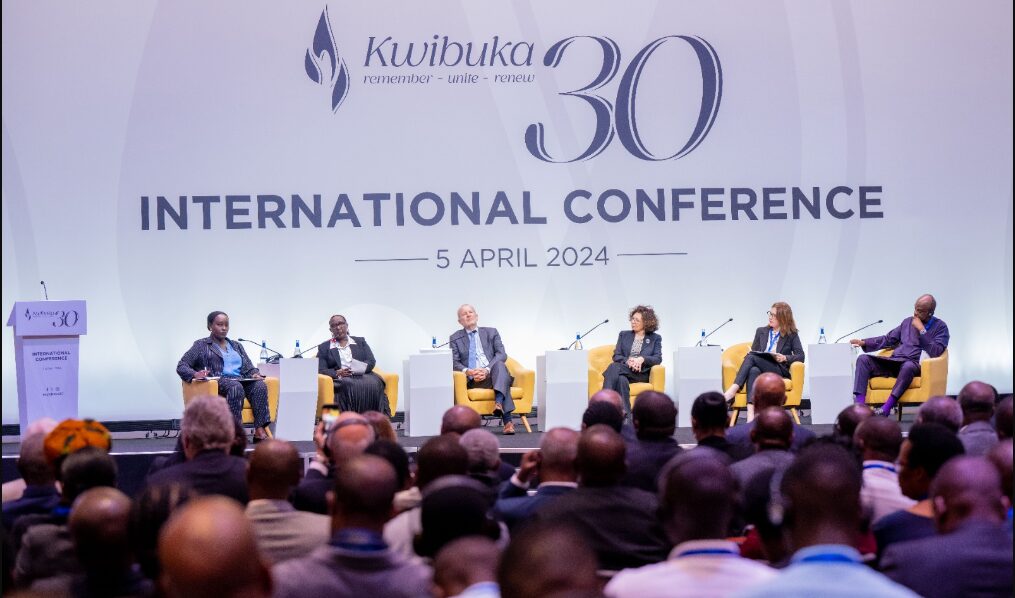
The panel-Eric Gillet(3rd from left)
International lawyers, Prosecutors and researchers have shared new facts around preparation and execution of the 1994 Genocide Against Tutsi and the important role of the then government to maximize the atrocities.
The experts have joined Rwanda for the Kwibuak 30 International Conference on the Genocide. In the morning, a panel of six, including a moderator, discussed the duty of justice and “protection of truth.”
Eric Gillet, a Belgian seasoned lawyer who participated in the first trial of the Genocide in his country and who was part of humanitarian mission to Rwanda before the Genocide spoke about the abuse of power before the Genocide.
He elaborated on the massacres of Bagogwe which took place in North-West of Rwanda, January-March 1991.
Gillet came to Rwanda in effort to plead for the liberation of Ibyitso who were taken to jail since 1990, accused of being accomplices of the Rwanda Patriotic Front(RPF) Inkotanyi, the rebel fighters who attacked Rwanda by the Eastern border, October 1,1990.
At that time, said Gillet, I succeeded because a number of them were released.
After this mission, Gillet returned for the investigation on the massacre of Bagogwe which was dismissed by the government.
He started his investigation in August 1991, which put light on the matter and was disseminated for the international community to know.
“After my effort, an international investigation commission was born, created by four non governmental organizations from Europe, Canada and America, with ten experts in human rights. We came for a larger investigation on war crimes committed in Rwanda from October 1990,” Gillet told the audience at Intare conference Arena where guest of Honor was First Lady Jeannette Kagame.
According to Gillet, the investigation was quiet difficult because the government itself concealed information and refused to offer death certificates of the victims, pretending that the “missing people” had joined RPF.
“At first, our investigation thought that the victims would have been thrown in volcanic cavities, but when we pushed further, we found that there were several small mass graves of ten-twenty people across the region,” he said.
“While digging, we found such mass graves in the garden of the then Bourgmester of Kinigi,” Gillet said.
A part from these massacres of Bagogwe, which Gillet’s commission qualifies of genocide crimes, they also updated the structure of how the Genocide in Rwanda was conducted.
After connecting dots from the massacre of Tutsi in Bugesera in 1992, and the 1994 Genocide against Tutsi, they confirmed that the genocide followed the same structure of the massacres that were executed during the regimes of the first and second republics in Rwanda.
“We could see the decentralized entities, import of criminal groups (case of Interahamwe for exampole) from one regions to contribute to killings in another region…we realized that the whole country was following the same structure,” Gillet said.
According to this expert, the killings were following administrative boundaries.
“There was a strong implication of grassroots leaders. In a place where a burgomaster of the commune was involved, the massacre had to happen, and in another one, if the authority was not involved, nothing would happen,” he said.
Gillet’s commission also managed to access the Force Armes Rwandaise(FAR) document which defined the enemy in 1993. In real sense, FAR defined the enemy as being Tutsi at large.
“It was a fundamental document which would be an important tool in propagation of the Genocide,” he said.

